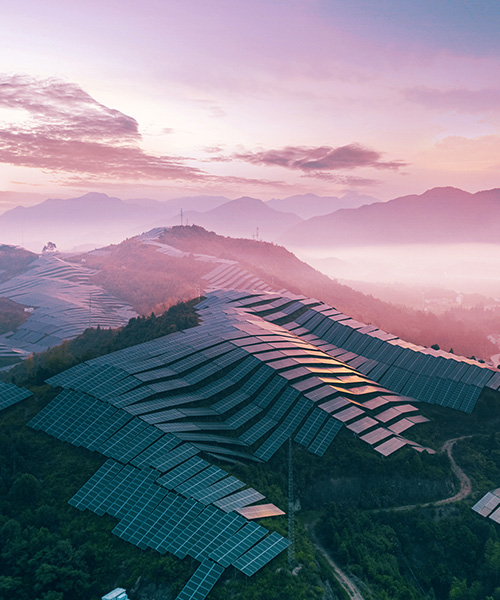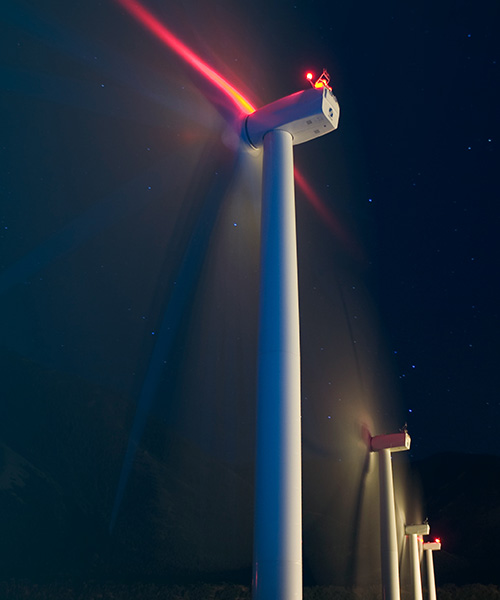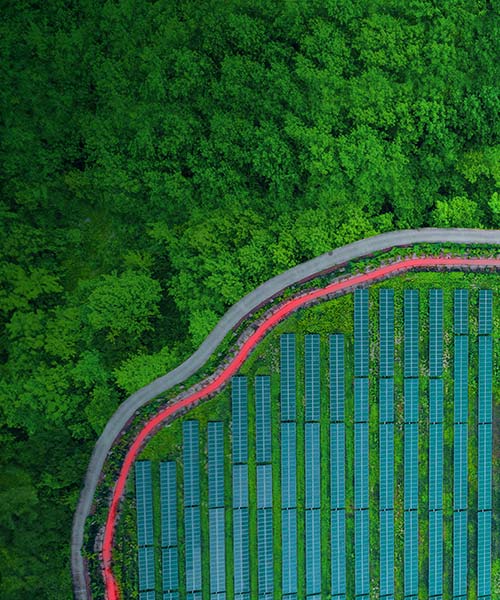June 26, 2023 • 5 min read
From Ambition to Reality: Four things you need to know about standardization in the journey to net zero
Within this decade, standards and standardized designs can become widespread even in complex industries. Governments can ready supply chains to reduce lead times to less than six months for the most complex equipment. And schedule benchmarks can continuously be improved.
All this can be done, but how? From Ambition to Reality, our thought leadership paper series in partnership with Princeton University’s Andlinger Centre for Energy and the Environment, explains what we need to do to make this a reality.
The series proposes five key shifts in thinking about and delivering projects on the road to net zero. The third shift, standardization, outlines how projects must move to a system where we standardize as many aspects of a design as possible, and then replicate that design many times.

Currently, most projects are bespoke. Each time, a design must be developed and put through a lengthy approval process. Each has its own equipment and materials procurement schedules. Each time, we go back to square one. Each time, we waste time.
So, if we could use a successful design as a blueprint – to be cloned again and again – running programs of projects in parallel, we could dramatically increase how much gets built, and how quickly. An aspect that’s critical if want to achieve net zero on time.
We explore four things our industry must do to scale and speed up our journey through standardization.
1. Develop a global set of design standards
Bespoke, project-by-project processes slow us down: regulatory differences, supply chain issues, addressing community concerns, and designing to capital supply demands, can add years to a project.
But, if we could scale, replicate and disseminate standardized modular designs around the world and reduce bespoke requirements, we could minimize such issues. We must showcase and prioritize the utility and adaptability of standard designs. And our asset developers and regulators need to work with designers, suppliers, and construction companies to mandate that standardization.
“This is not just an infrastructure challenge. It’s as much about the standards we use to design and build. For example, we won’t achieve the speed and scale needed for ambitious wind power capacity targets if we’re taking the technologies and infrastructure successfully deployed in Europe, and then rejecting and redesigning them to satisfy alternative standards in the US,” says Chris Greig, Senior Researcher at Princeton University and co-author of the From Ambition to Reality series.
If the energy sector could standardize and modularize designs, to uniform international standards, and stock supply chains, project schedules could be compressed and costs would be substantially reduced. This kind of thinking and collaboration is critical if we are to speed up the energy transition.
2. Readying the supply chain
By introducing common equipment standards and specifications across countries, equipment and parts will be quicker to make, transport and install. Lead times could be halved if we clone designs, and their components bought off-the-shelf, rather than being bespoke.
“Global supply chain players, and their logistics partners, become critical partners and must be part of the planning and design process. This way, they don’t have to wait until the engineer has finished the design, they can contribute to the design and build their inventories around existing equipment specifications. Delays on long-lead critical equipment and supply chain constraints could become a thing of the past,” says Greig.
“There are barriers for suppliers, though. Will their prospects become purchase orders, and how quickly? To solve this, governments have a role to play, too, especially in emerging sectors like clean hydrogen, where there is uncertainty in how fast the demand will grow.
“A government committed to net zero may have to underwrite the supply chain to build up inventories even if there is uncertainty about the size and timing in the pipeline of future projects,” explains Greig.
3. Sourcing enough raw materials
When standardizing designs and projects, one hurdle to overcome will be around the supply of raw materials. The required speed and scale of deployment required by the energy transition will cause demand for raw materials to skyrocket.
“Critical minerals supply chains have several vulnerabilities. Many of these resources are concentrated in a handful of countries, so geopolitical tensions can threaten supply,” says Greig.
“Growing scrutiny of environmental, social and governance issues could constrain access to minerals sourced from areas where water is scarce, environmental standards are too lax, or workers and local communities are treated poorly.
“Changing climates and extreme weather events could also make sourcing more difficult. All of these are already resulting in escalating prices and could ultimately limit access to high-quality, cost-effective minerals.
“These challenges can be met in several ways. One is by extracting minerals from complex lower-grade ore bodies, in a more efficient and sustainable way. And another is by establishing circular economies, where we take pre-used and surplus industrial materials and recycle them. Of course, these initiatives will cost more, at least in the near term.
“We need to demonstrate and scale-up these innovations and practices to assure supplies of key materials this decade. And we’ll need to see compromise and collaboration right across the value chain, in order to avoid acute shortages and very high costs later in the transition.”
4. Learn from other industries
Several industries such as automotive, telecommunications and aerospace have innovated around standardized parts and strategies to speed up procurement and delivery. In the energy industry particularly in conventional energy and power, we’ve been standardizing certain reference designs in specific countries for years.
But we’ve got some clear obstacles in our way, and we must not confuse standardization strategies with an unwillingness to innovate.
“Much of the technology used by researchers to develop COVID-19 vaccines already existed. The energy sector can also redeploy existing designs to new technologies and systems. But of course, we can only do this if our business and political environment is open and collaborative, sharing data across teams, projects, and corporate and national boundaries,” says Greig.
“The energy transition is also an opportunity to transfer skills and know-how from already established workforces. For example, we can use highly skilled subject matter experts in offshore oil and gas for the front-end design phase of a wind or solar project. And we can use local fabrication teams for the construction and operational phases.
“But the transition will require many more workers than are currently engaged in the energy sector. Increased standardization of designs, will speed up training, and allow skills to be transferrable between industries and across regions.”




